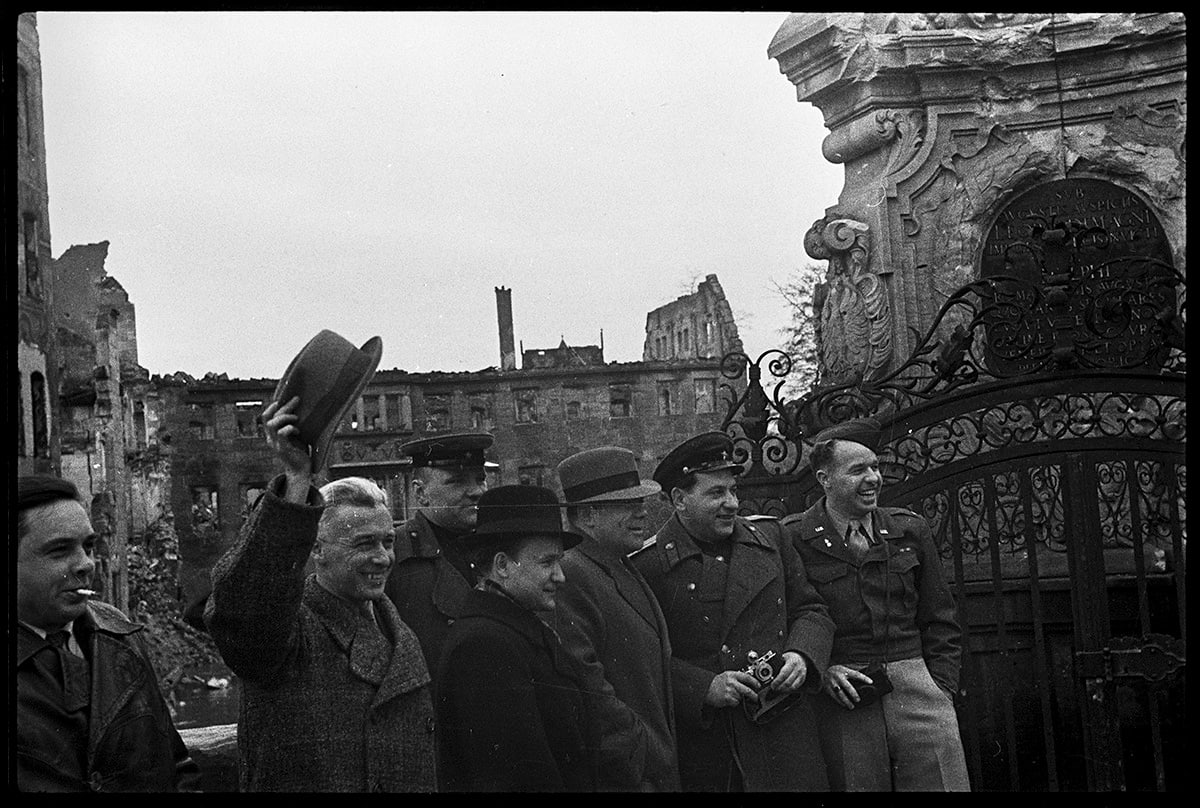
Nuremberg trial - the most famous and mysterious trial of the 20th century
Nuremberg trial - the most famous and mysterious trial of the 20th century
On October 1, 1946, the Nuremberg International Military Trial, the most famous and mysterious trial of the 20th century, came to an end. The international trial of the former leaders of Hitler's Germany took place from November 20, 1945 to October 1, 1946 at the International Military Tribunal, in the Palace of Justice building in Nuremberg, Germany.
The trial was organized by the victorious countries in World War II: USSR, USA, Great Britain and France. The main prosecutor from the USSR at the Nuremberg process was Rudenko Roman (1907 - 1981), and the chief judge was the judge of the Supreme Court of the United States - Robert Hewaut Jackson (1892 - 1954). Neither Scandinavians, nor Poles, nor Czechs, nor Yugoslavs, nor Greeks, nor Dutch and Belgians, i.e. the countries that were victims of German aggression to a greater or lesser degree, were not allowed to participate in the process.
The judges began reading the verdict of the tribunal as early as September 30, 1946, but the enumeration of crimes took a whole day and ended only on October 1. According to the verdict of the court on October 1, 1946, Goering, Ribbentrop, Keitel, Rosenberg, Kaltenbrunner, Frick, Frank, Streicher, Sauckel, Jodl, Seyss-Inquart and in Bormann were sentenced to death by hanging; Hess, Funk and Reder - to life imprisonment in Spandau prison; Schirach, Speer - to 20 years; Neurath - to 15 years; Doenitz - to 10 years.
On the night of October 16, 1946, Joachim von Ribbentrop, Wilhelm Keitel, Ernst Kaltenbrunner, Alfred Rosenberg, Hans Frank, Wilhelm Frick, Julius Streicher, Fritz Sauckel, Alfred Jodl, and Arthur Seyss-Inquart were hanged in the gym of Nuremberg Prison. After the execution, which took a full three hours, the bodies were examined and photographed. They were wrapped in mattresses and put into coffins in their last clothes, with the ropes on which the criminals were hung. The same was done with the body of Goering, who two hours before the execution ate an ampoule of poison. Who gave it to him remained a mystery.
At four in the morning, the coffins were loaded onto trucks, covered with tarpaulins and transported with a military escort to Munich. There the bodies were cremated. The crematorium workers themselves did not know whom they were sending to the furnace, and the ashes of the criminals were scattered over the Isar River so as not to create places of worship.
The trial lasted almost 11 months and the hearings lasted 218 days. 403 sessions were held, more than three thousands of original documents were examined, and more than 200 witnesses were questioned. About 500 witnesses from occupied countries were questioned by visiting commissions. In total, more than 300 thousands of written testimonies, as well as materials found by the Allies in the army headquarters, government buildings, departmental archives of the Reich were added to the case. 200 tons of paper, 27 thousand meters of sound film, more than 50 million pages of printed materials were spent, more than 30 thousands of photocopies of documents were made, hundreds of kilometers of film were viewed.
60 thousands passes were issued to the conference hall. 250 out of 350 seats were occupied by the press. And one of these press representatives was the Soviet photographer Alexander Kapustyansky. Unknown footage from this trial remained for a long time in an envelope as spare working material in one of the Soviet newspapers, and then, by a happy accident, ended up in my collection.

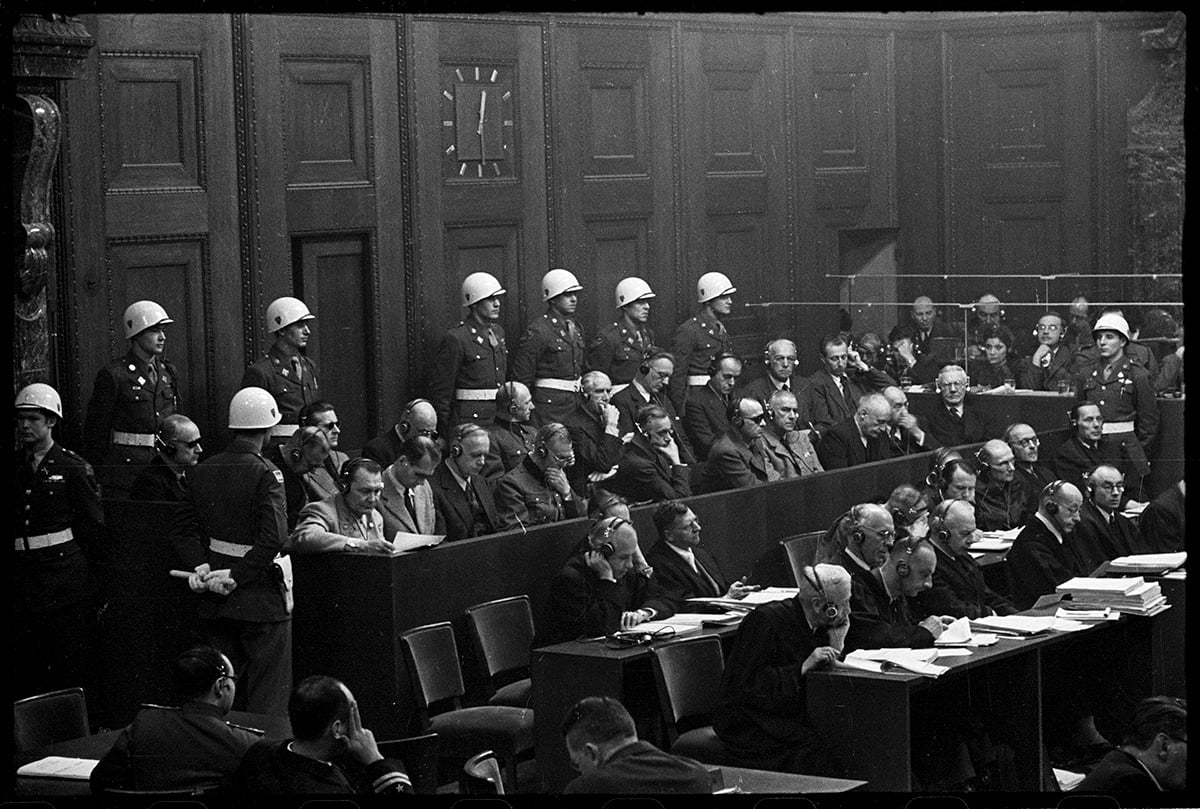
The defendants during the hearing. (1st row (left to right): Goering, Hess, Ribbentrop, Keitel, Kaltenbrunner, Rosenberg, Frank, Frick, Funk, Schacht; 2nd row: Denitz, Reder, Schirach, Sauckel, Iodl, Papen, Zeiss-Inquart, Speer, Neurath, Fritche. Nuremberg, Germany, 1945-46
The defendants during the hearing. (1st row (left to right): Goering, Hess, Ribbentrop, Keitel, Kaltenbrunner, Rosenberg, Frank, Frick, Funk, Schacht; 2nd row: Denitz, Reder, Schirach, Sauckel, Iodl, Papen, Zeiss-Inquart, Speer, Neurath, Fritche. Nuremberg, Germany, 1945-46
Hearings at the Nuremberg Trials. Nuremberg, Germany, 1945-46
Hearings at the Nuremberg Trials. Nuremberg, Germany, 1945-46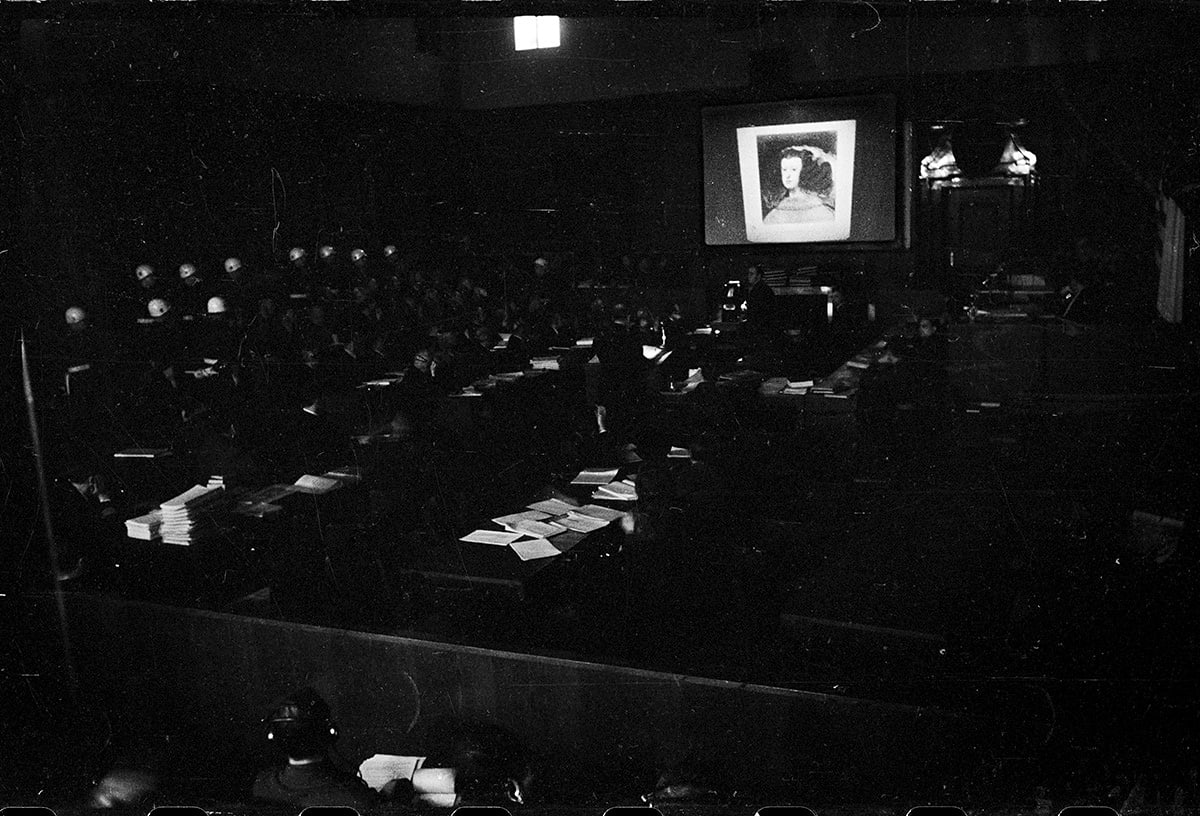
Demonstration of artworks stolen by the Nazis during the war. Nuremberg, Germany, 1945-46
Demonstration of artworks stolen by the Nazis during the war. Nuremberg, Germany, 1945-46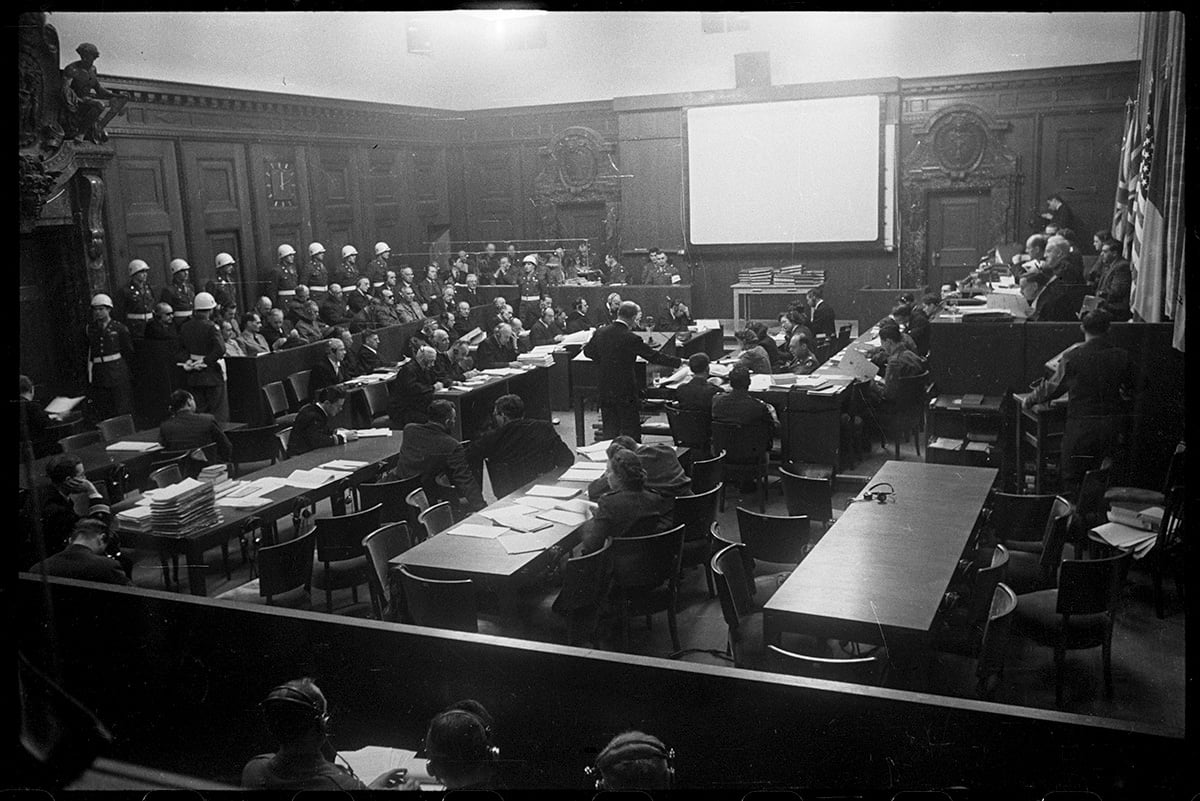
Hearings at the Nuremberg Trials. Nuremberg, Germany, 1945-46
Hearings at the Nuremberg Trials. Nuremberg, Germany, 1945-46
Hearings at the Nuremberg Trials. Nuremberg, Germany, 1945-46
Hearings at the Nuremberg Trials. Nuremberg, Germany, 1945-46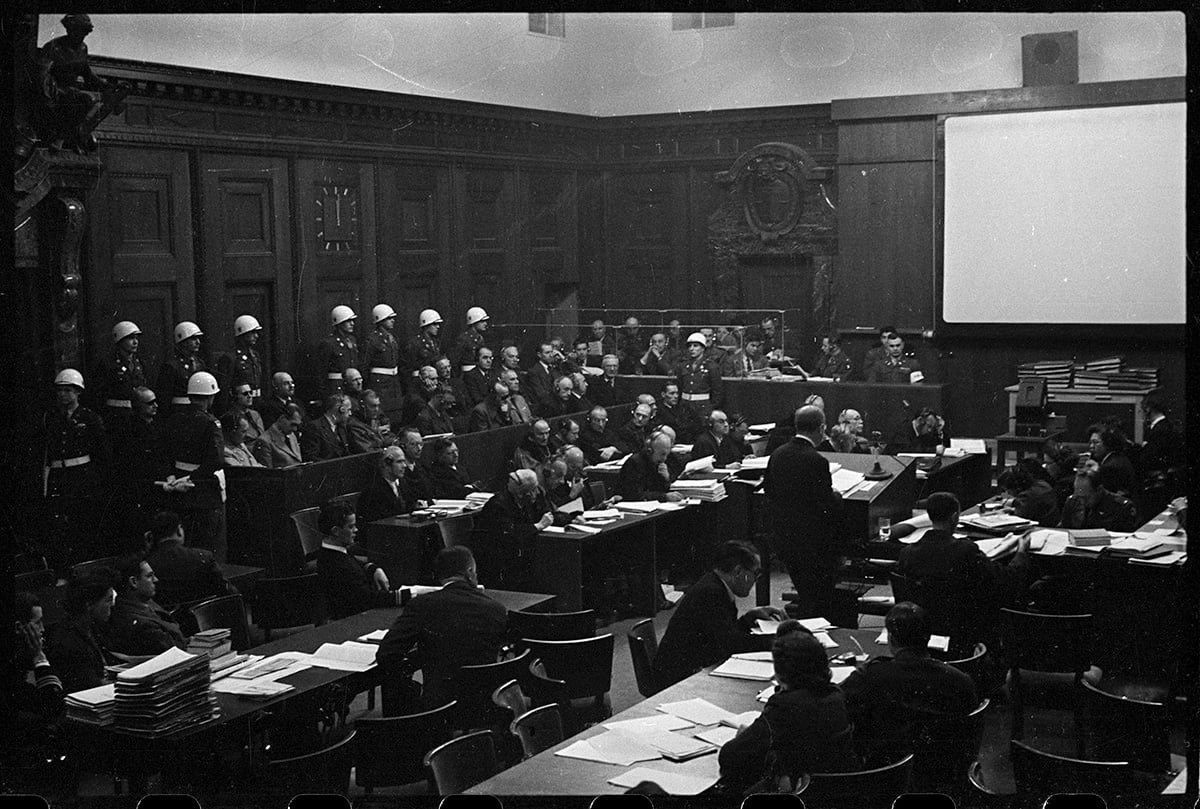
General view of the defendants' dock. Nuremberg, Germany, 1945-46
General view of the defendants' dock. Nuremberg, Germany, 1945-46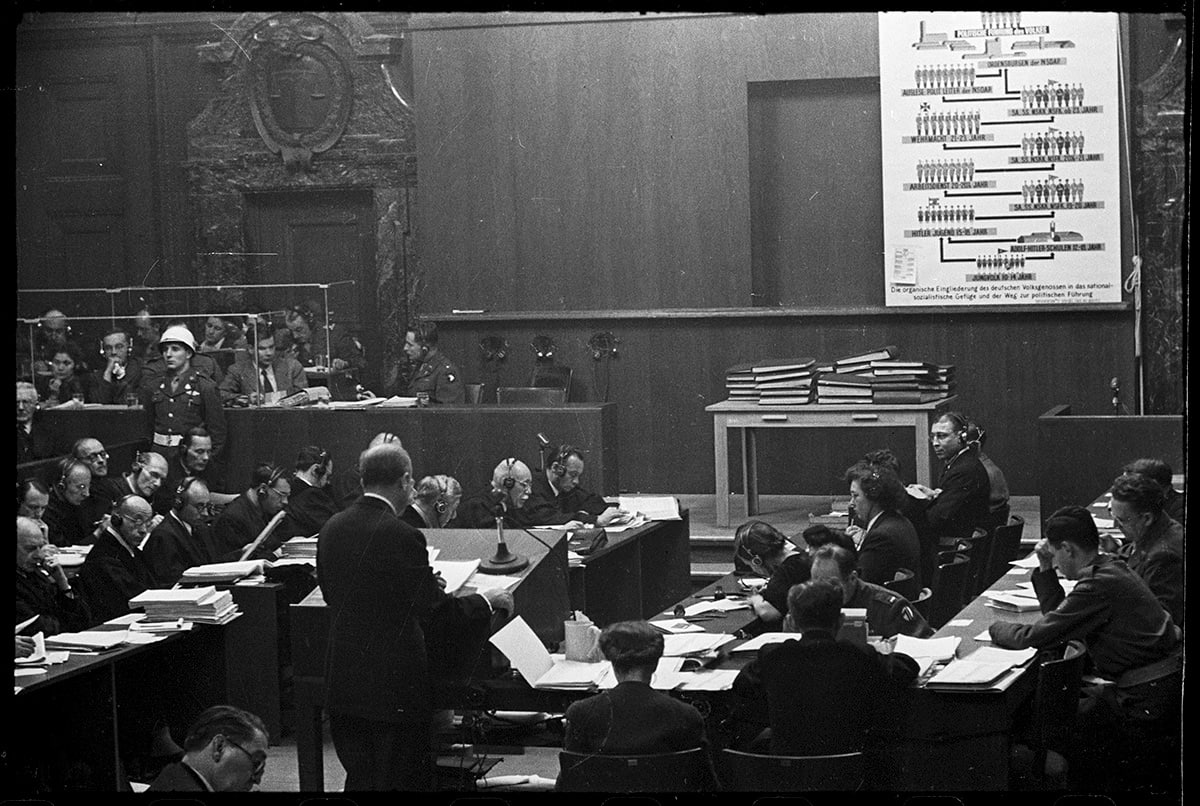
Demonstration of a diagram of the Nazi Party and its hierarchical system at the Nuremberg Trials. Nuremberg, Germany, 1945-46
Demonstration of a diagram of the Nazi Party and its hierarchical system at the Nuremberg Trials. Nuremberg, Germany, 1945-46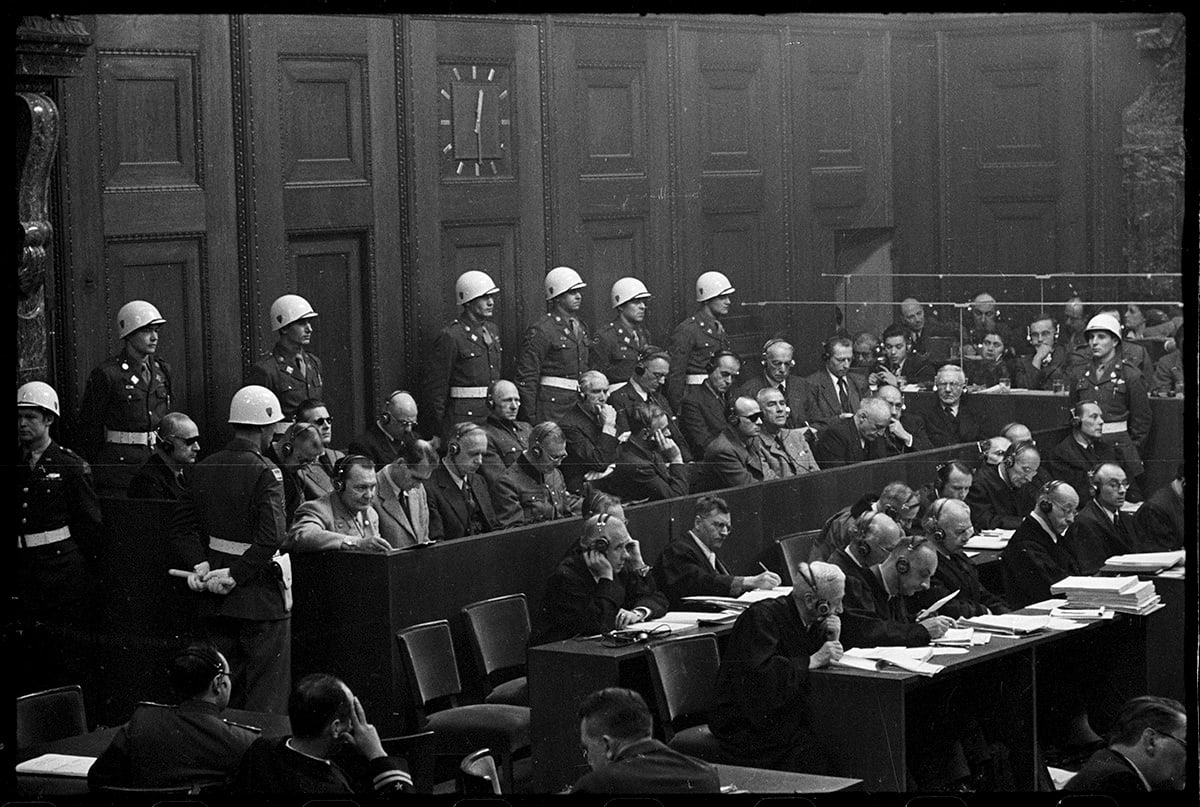
The defendants' bench during the hearing. (1st row (left to right): Goering, Hess, Ribbentrop, Keitel, Kaltenbrunner, Rosenberg, Frank, Frick, Funk, Schacht; 2nd row: Denitz, Reder, Schirach, Sauckel, Iodl, Papen, Zeiss-Inquart, Speer, Neurath, Fritche. Nuremberg, Germany, 1945-46
The defendants' bench during the hearing. (1st row (left to right): Goering, Hess, Ribbentrop, Keitel, Kaltenbrunner, Rosenberg, Frank, Frick, Funk, Schacht; 2nd row: Denitz, Reder, Schirach, Sauckel, Iodl, Papen, Zeiss-Inquart, Speer, Neurath, Fritche. Nuremberg, Germany, 1945-46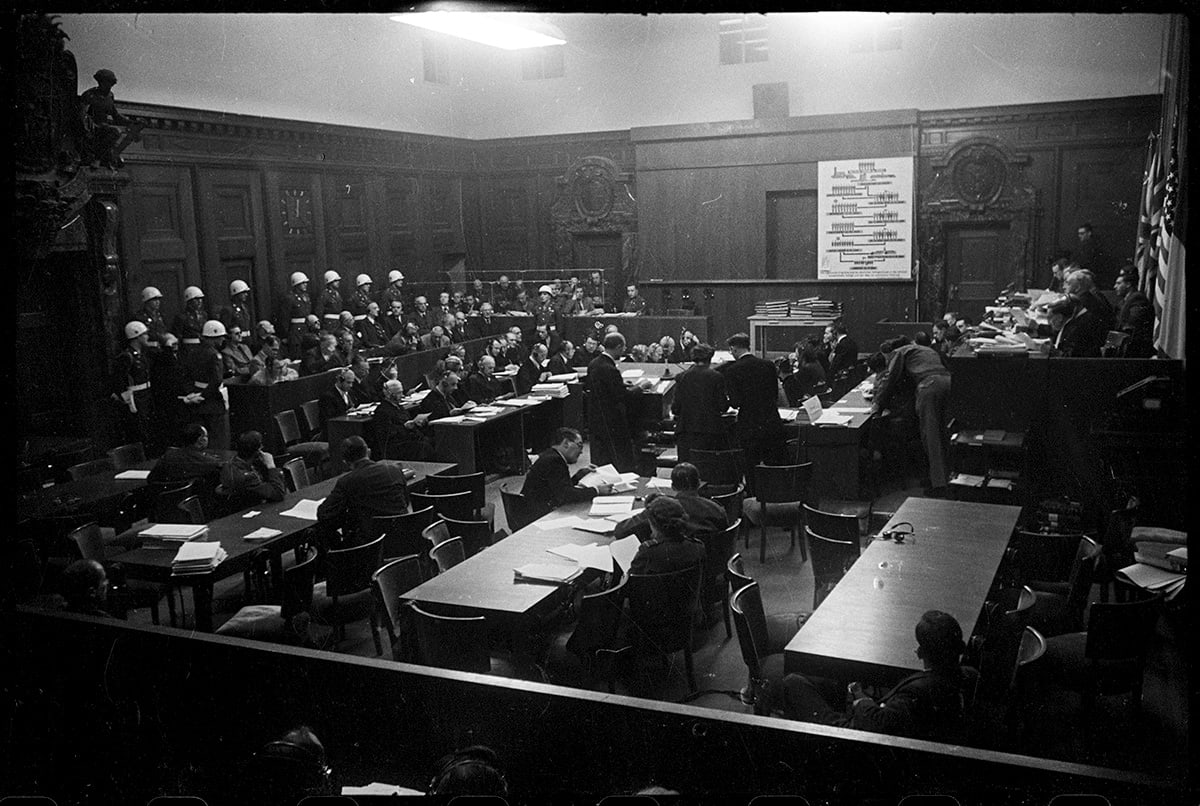
The Nuremberg Trials. General view of the hall. Nuremberg, Germany, 1945-46
The Nuremberg Trials. General view of the hall. Nuremberg, Germany, 1945-46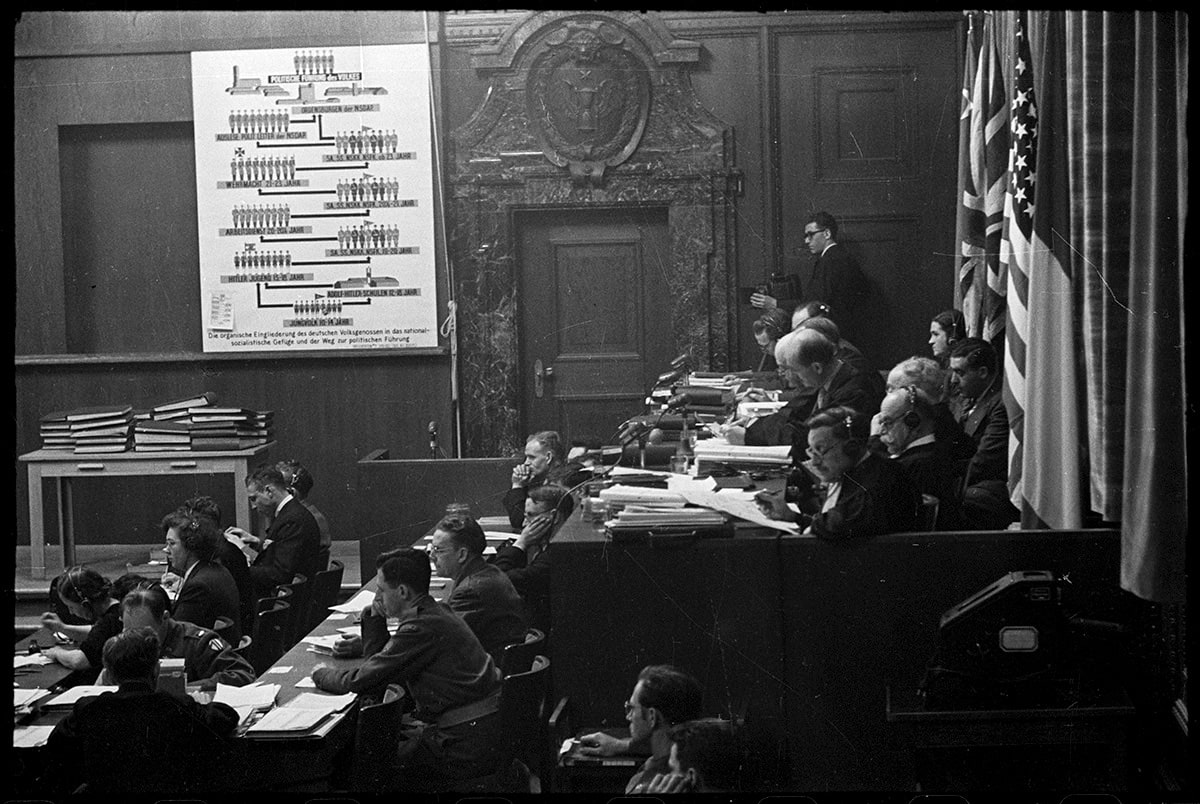
Demonstration of a diagram of the Nazi Party and its hierarchical system at the Nuremberg Trials. Nuremberg, Germany, 1945-46
Demonstration of a diagram of the Nazi Party and its hierarchical system at the Nuremberg Trials. Nuremberg, Germany, 1945-46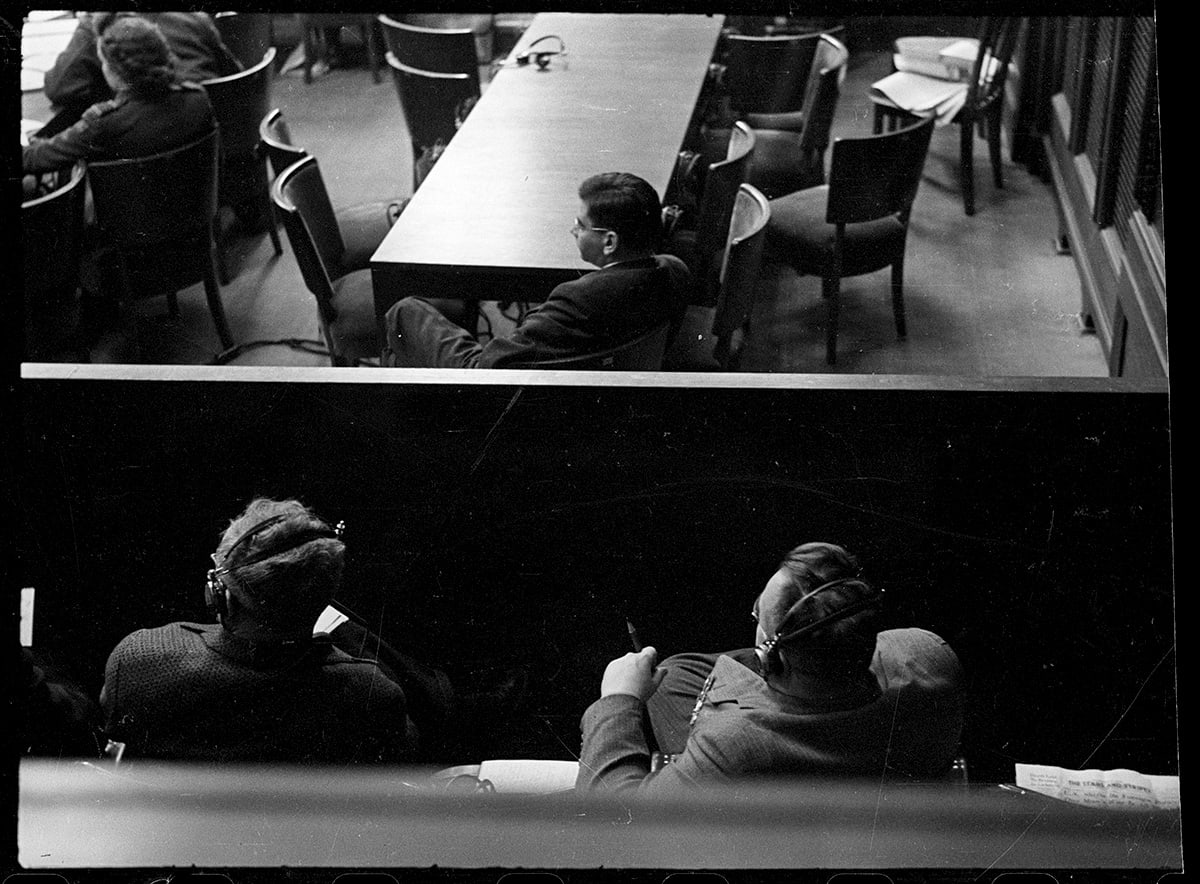
International officials and journalists at the Nuremberg Trials. Nuremberg, Germany, 1945-46
International officials and journalists at the Nuremberg Trials. Nuremberg, Germany, 1945-46
International officials and journalists at the Nuremberg Trials. Nuremberg, Germany, 1945-46
International officials and journalists at the Nuremberg Trials. Nuremberg, Germany, 1945-46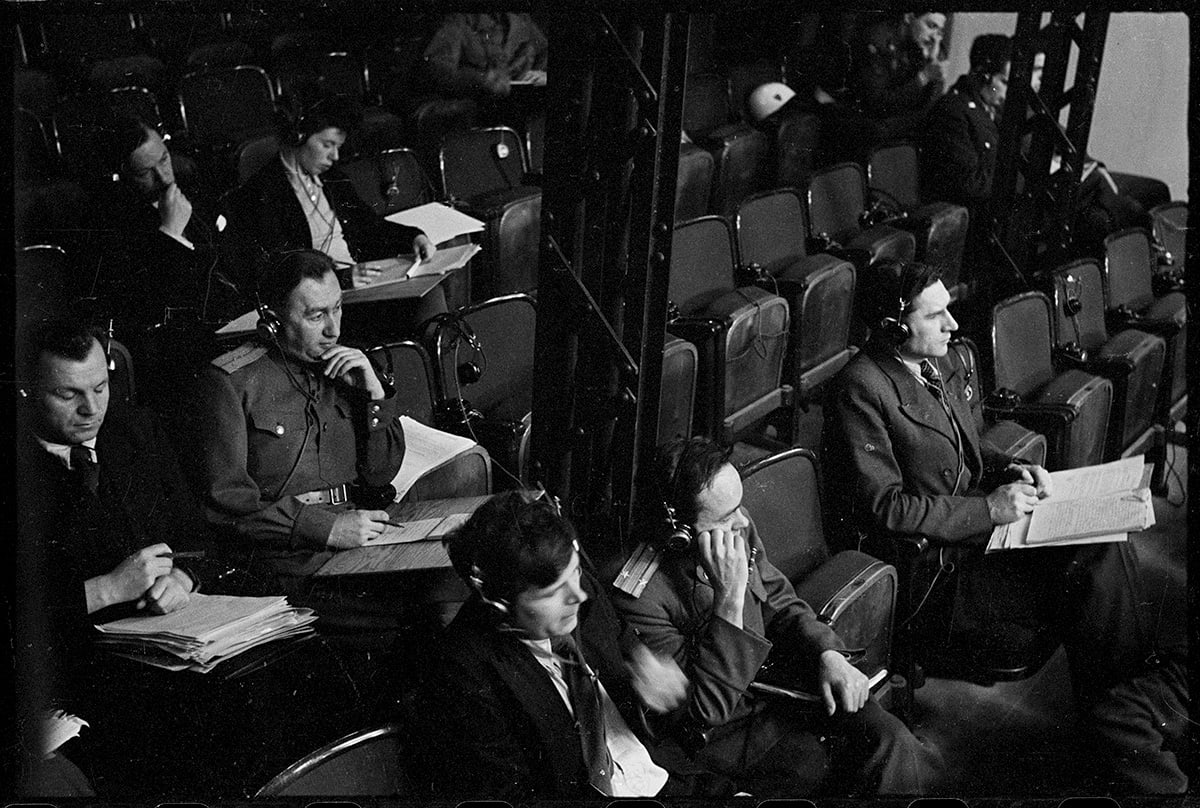
International officials and journalists at the Nuremberg Trials. Nuremberg, Germany, 1945-46
International officials and journalists at the Nuremberg Trials. Nuremberg, Germany, 1945-46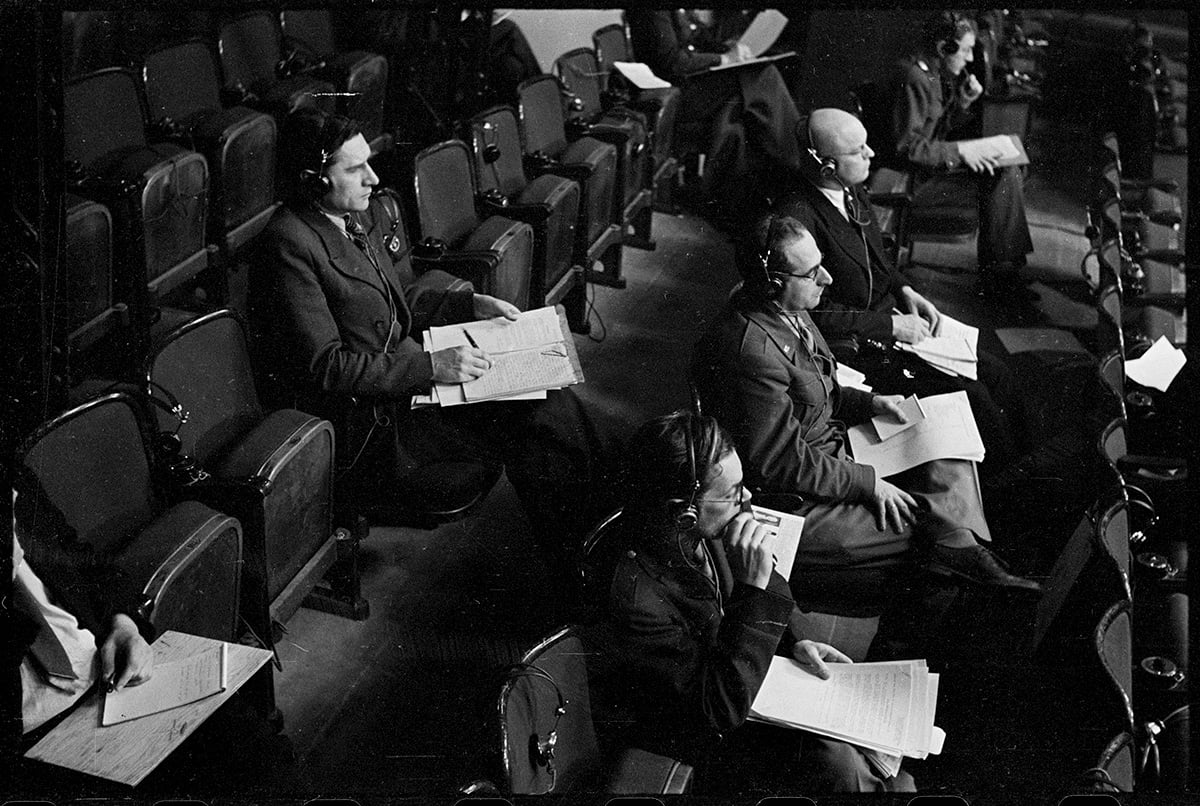
International officials and journalists at the Nuremberg Trials. Nuremberg, Germany, 1945-46
International officials and journalists at the Nuremberg Trials. Nuremberg, Germany, 1945-46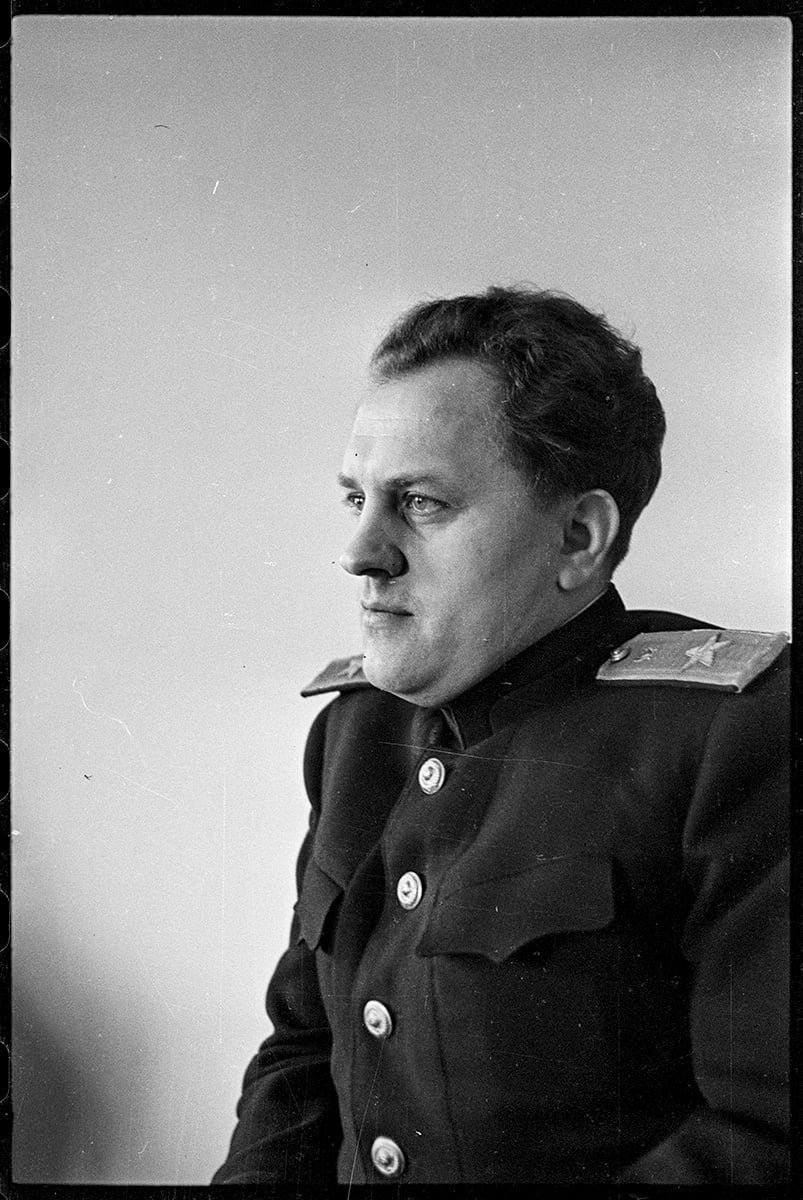
Konstantin Gorshenin (USSR Prosecutor General) at the Nuremberg Trials. Nuremberg, Germany, 1945-46
Konstantin Gorshenin (USSR Prosecutor General) at the Nuremberg Trials. Nuremberg, Germany, 1945-46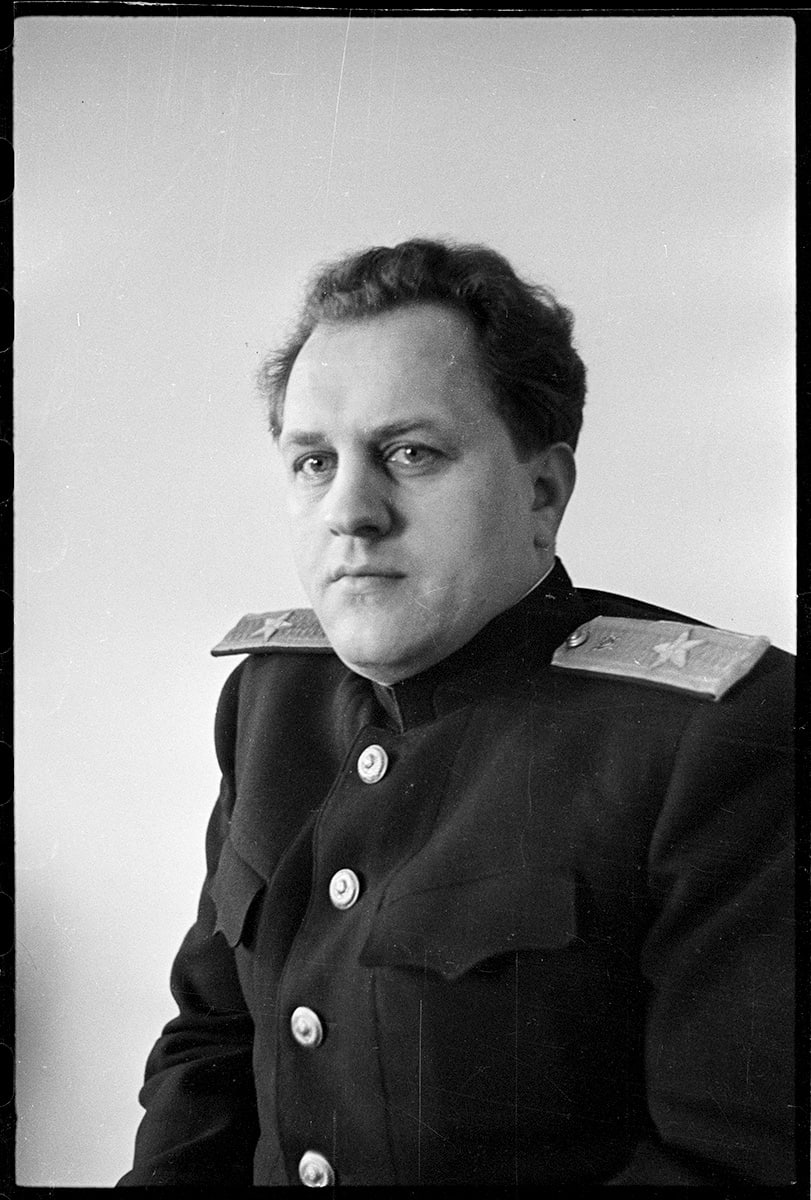
Konstantin Gorshenin (USSR Prosecutor General) at the Nuremberg Trials. Nuremberg, Germany, 1945-46
Konstantin Gorshenin (USSR Prosecutor General) at the Nuremberg Trials. Nuremberg, Germany, 1945-46
Konstantin Gorshenin (USSR Prosecutor General) at the Nuremberg Trials. Nuremberg, Germany, 1945-46
Konstantin Gorshenin (USSR Prosecutor General) at the Nuremberg Trials. Nuremberg, Germany, 1945-46
Konstantin Gorshenin (USSR Prosecutor General) at the Nuremberg Trials. Nuremberg, Germany, 1945-46
Konstantin Gorshenin (USSR Prosecutor General) at the Nuremberg Trials. Nuremberg, Germany, 1945-46
Konstantin Gorshenin (USSR Prosecutor General) at the Nuremberg Trials. Nuremberg, Germany, 1945-46
Konstantin Gorshenin (USSR Prosecutor General) at the Nuremberg Trials. Nuremberg, Germany, 1945-46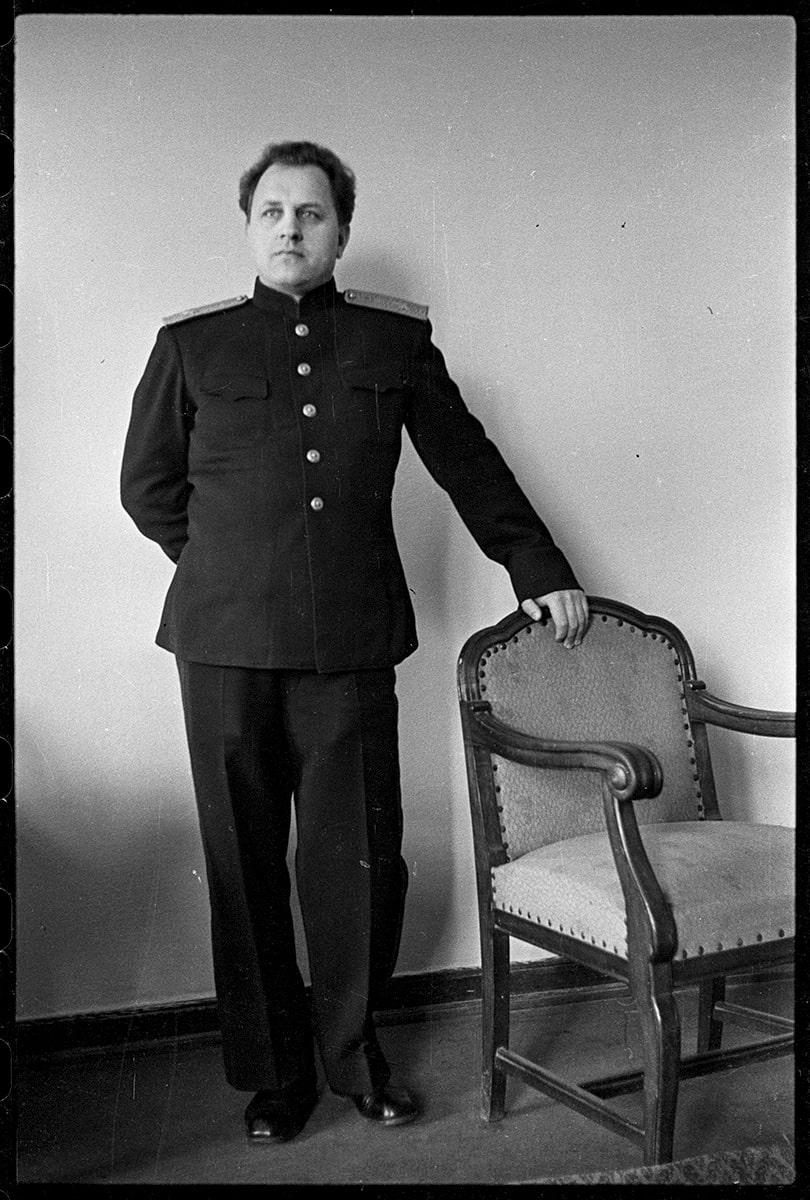
Konstantin Gorshenin (USSR Prosecutor General) at the Nuremberg Trials. Nuremberg, Germany, 1945-46
Konstantin Gorshenin (USSR Prosecutor General) at the Nuremberg Trials. Nuremberg, Germany, 1945-46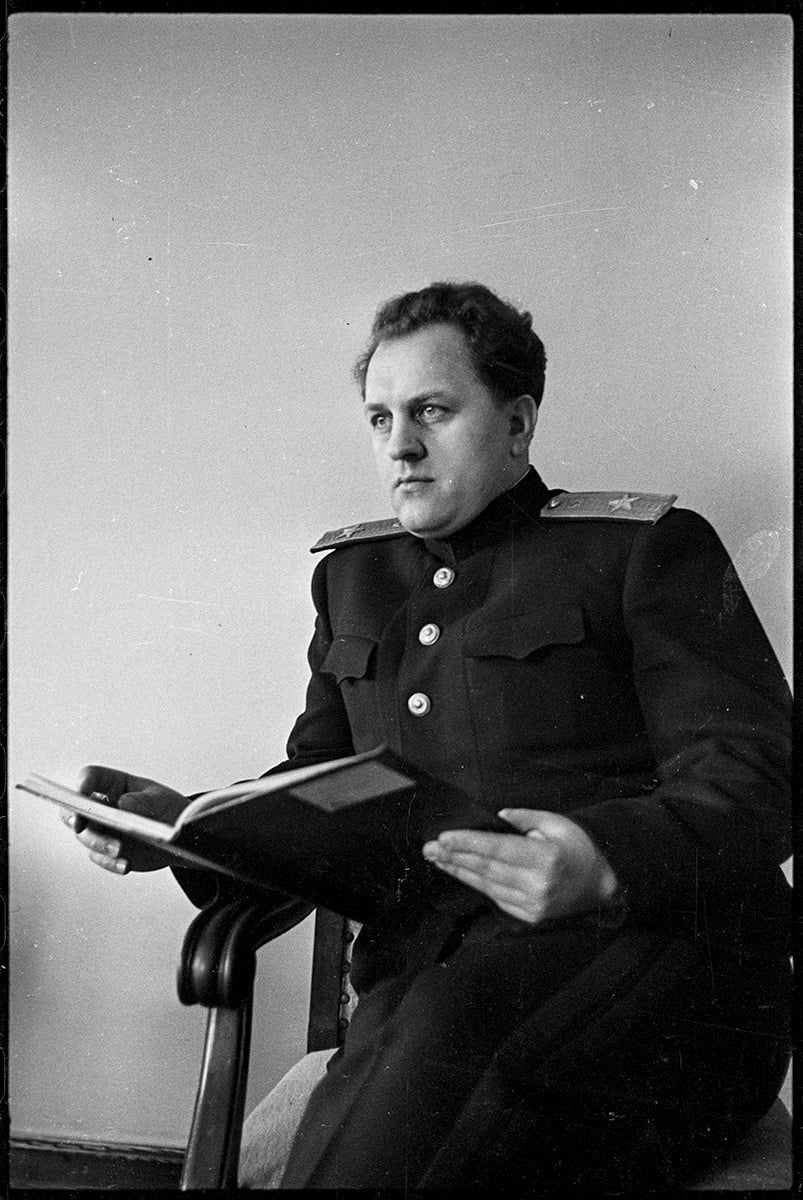
Konstantin Gorshenin (USSR Prosecutor General) at the Nuremberg Trials. Nuremberg, Germany, 1945-46
Konstantin Gorshenin (USSR Prosecutor General) at the Nuremberg Trials. Nuremberg, Germany, 1945-46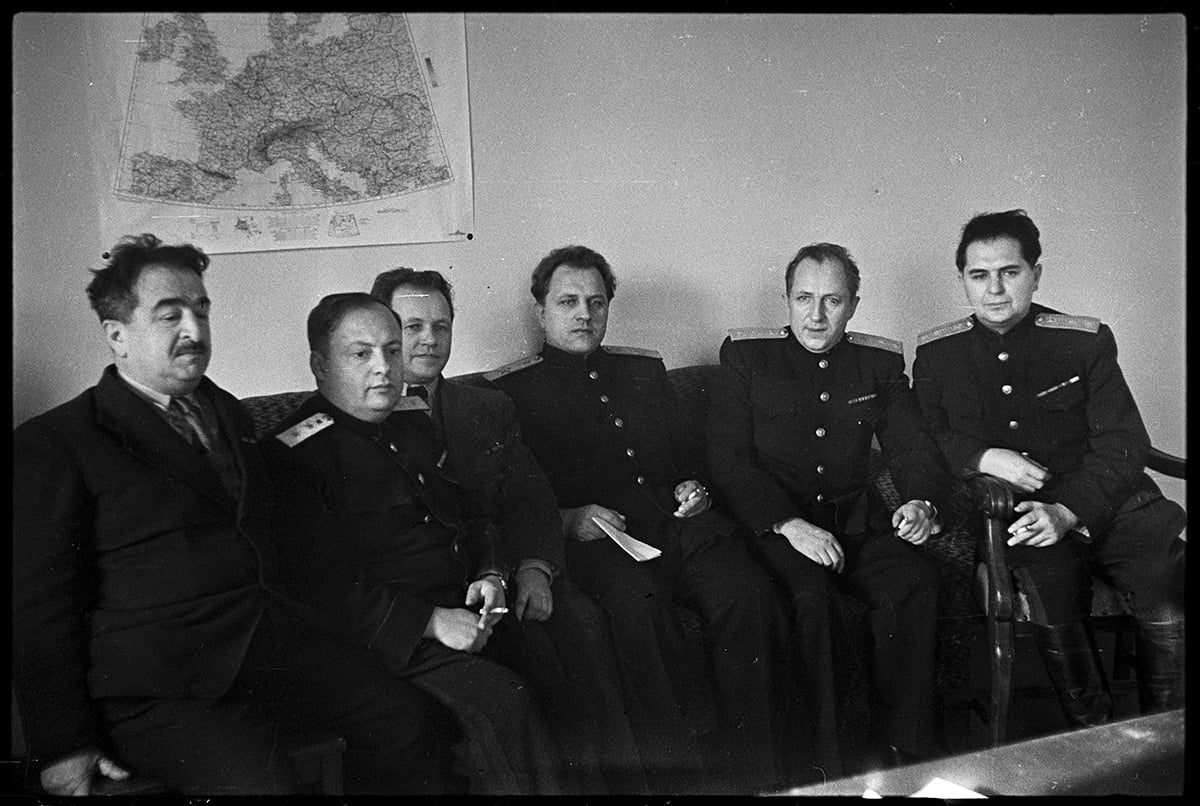
Soviet group of prosecutors: Aron Naumovich Traynin, Lev Romanovich Sheinin (Assistant Chief Prosecutor), Konstantin Petrovich Gorshenin (USSR Prosecutor General), Roman Andreyevich Rudenko (USSR Chief Prosecutor) and others. Nuremberg, Germany, 1945-46
Soviet group of prosecutors: Aron Naumovich Traynin, Lev Romanovich Sheinin (Assistant Chief Prosecutor), Konstantin Petrovich Gorshenin (USSR Prosecutor General), Roman Andreyevich Rudenko (USSR Chief Prosecutor) and others. Nuremberg, Germany, 1945-46
Soviet group of prosecutors: Aron Naumovich Traynin, Lev Romanovich Sheinin (Assistant Chief Prosecutor), Konstantin Petrovich Gorshenin (USSR Prosecutor General), Roman Andreyevich Rudenko (USSR Chief Prosecutor) and others. Nuremberg, Germany, 1945-46
Soviet group of prosecutors: Aron Naumovich Traynin, Lev Romanovich Sheinin (Assistant Chief Prosecutor), Konstantin Petrovich Gorshenin (USSR Prosecutor General), Roman Andreyevich Rudenko (USSR Chief Prosecutor) and others. Nuremberg, Germany, 1945-46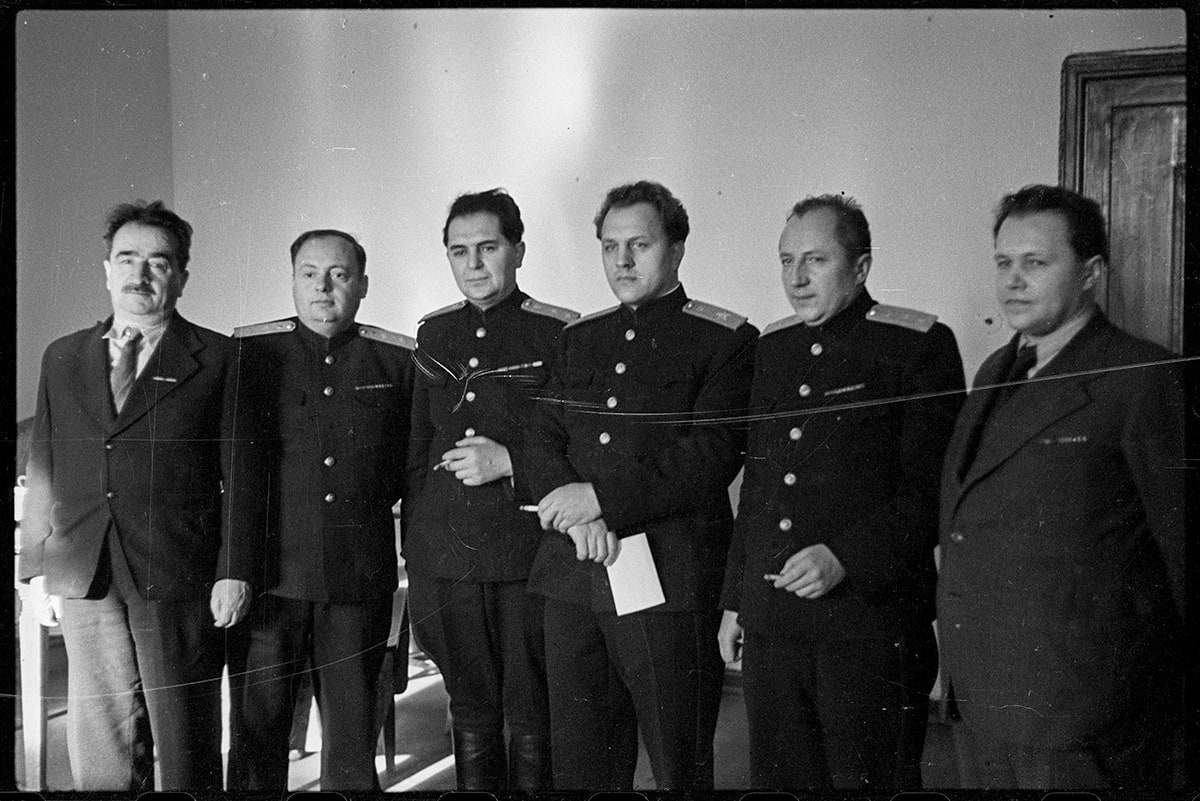
Soviet group of prosecutors: Aron Naumovich Traynin, Lev Romanovich Sheinin (Assistant Chief Prosecutor), Konstantin Petrovich Gorshenin (USSR Prosecutor General), Roman Andreyevich Rudenko (USSR Chief Prosecutor) and others. Nuremberg, Germany, 1945-46
Soviet group of prosecutors: Aron Naumovich Traynin, Lev Romanovich Sheinin (Assistant Chief Prosecutor), Konstantin Petrovich Gorshenin (USSR Prosecutor General), Roman Andreyevich Rudenko (USSR Chief Prosecutor) and others. Nuremberg, Germany, 1945-46
During the Nuremberg Trials. Nuremberg, Germany, 1945-46
During the Nuremberg Trials. Nuremberg, Germany, 1945-46
During the Nuremberg Trials. Nuremberg, Germany, 1945-46
During the Nuremberg Trials. Nuremberg, Germany, 1945-46